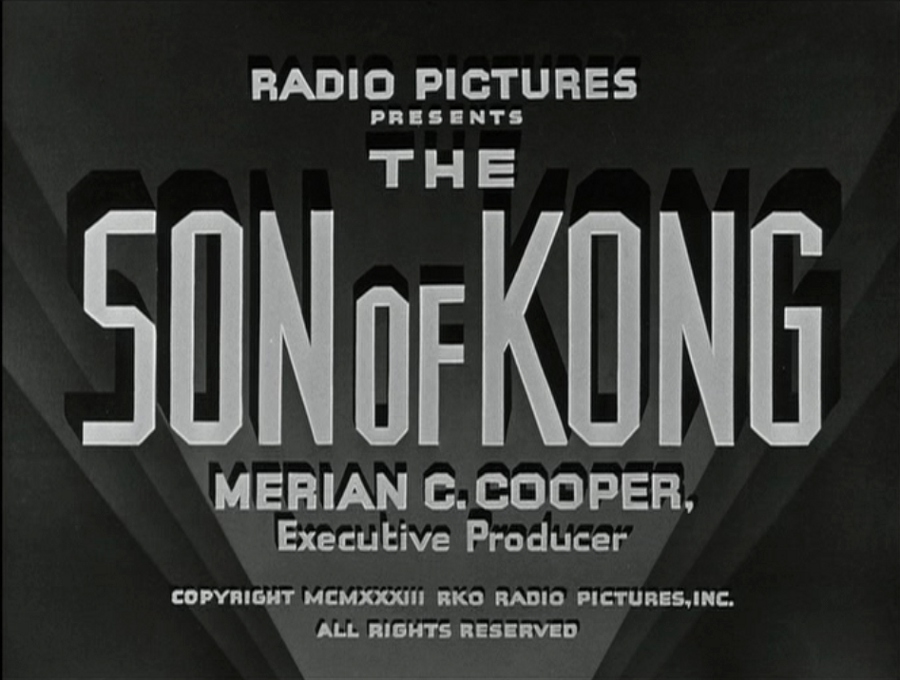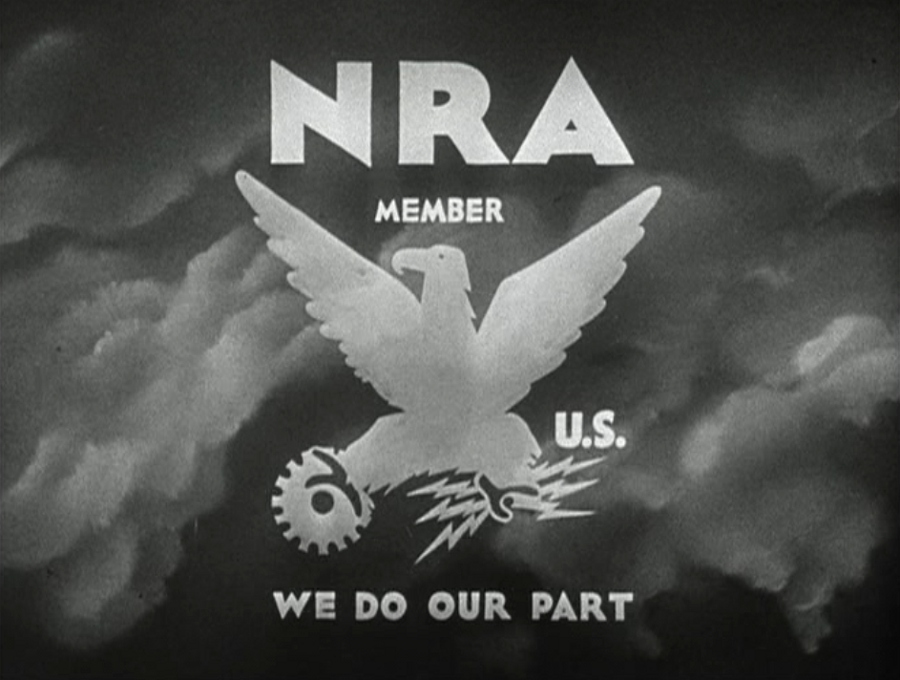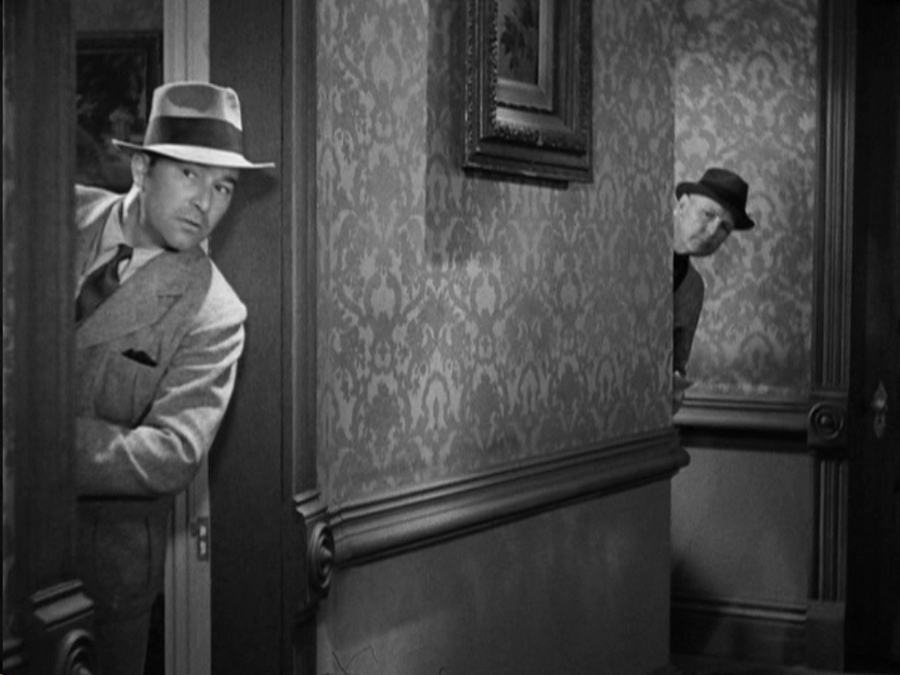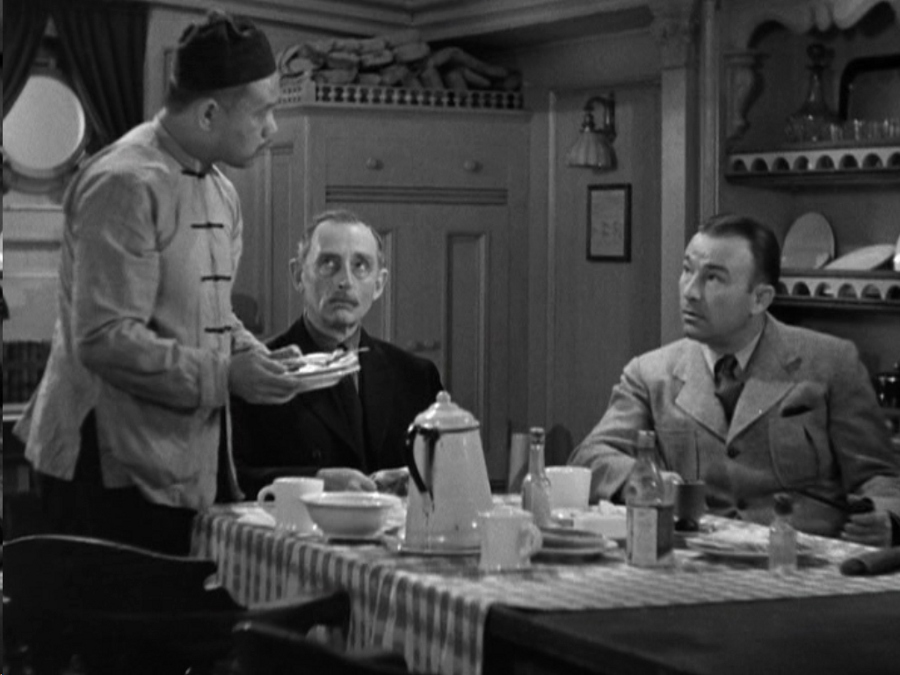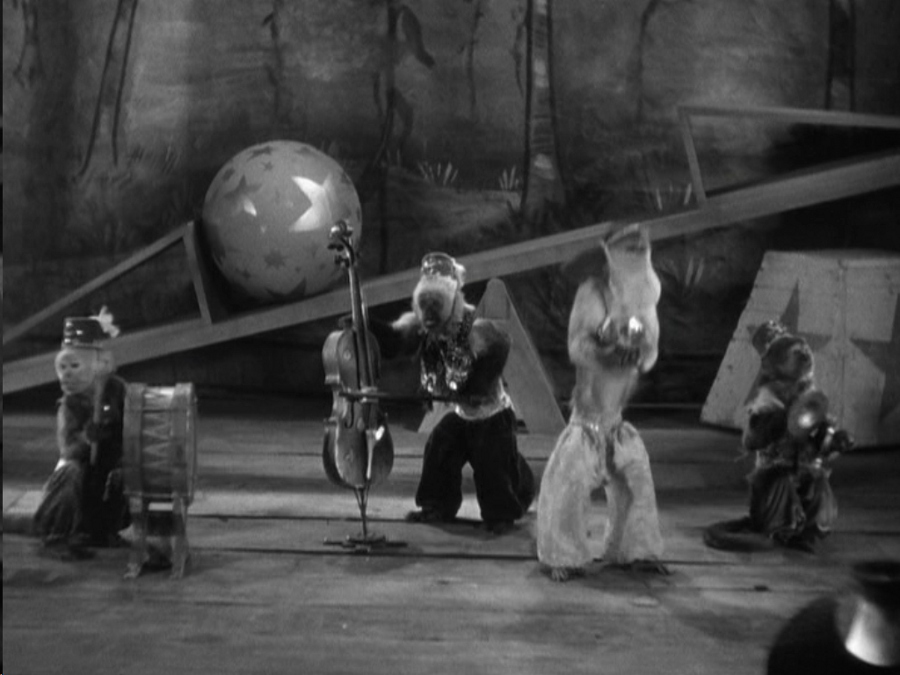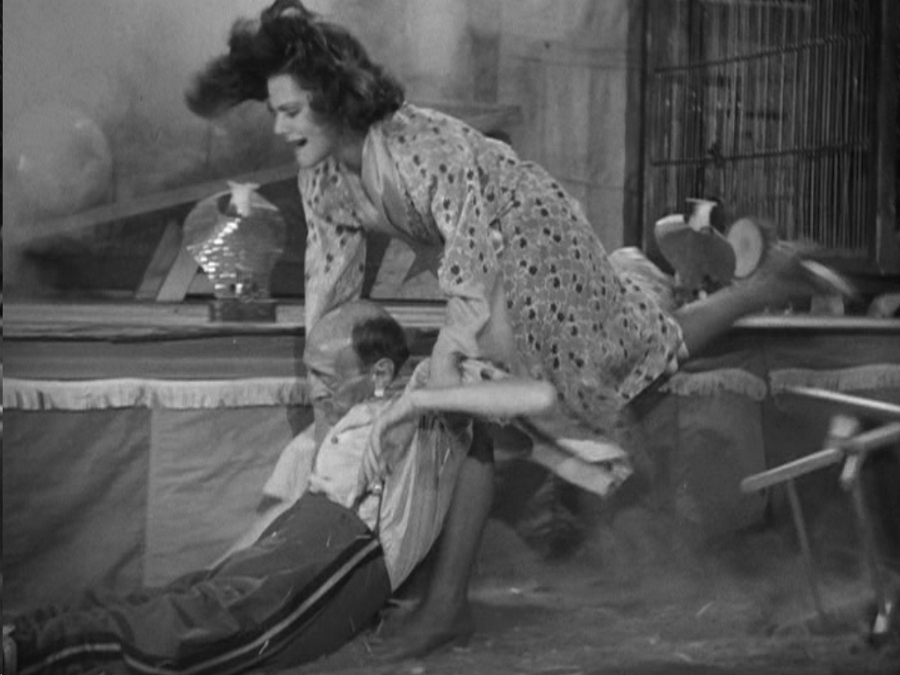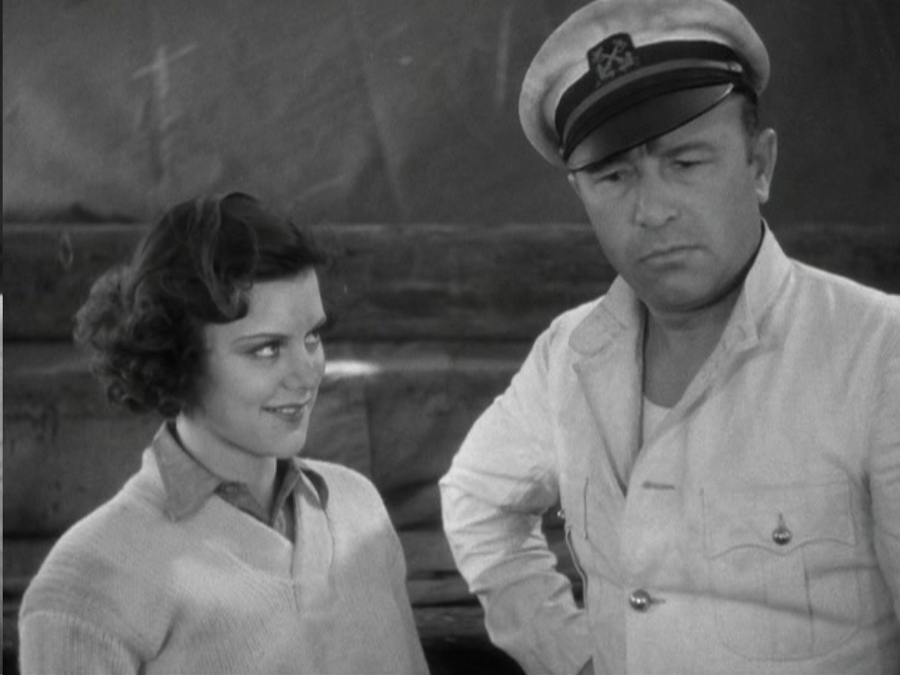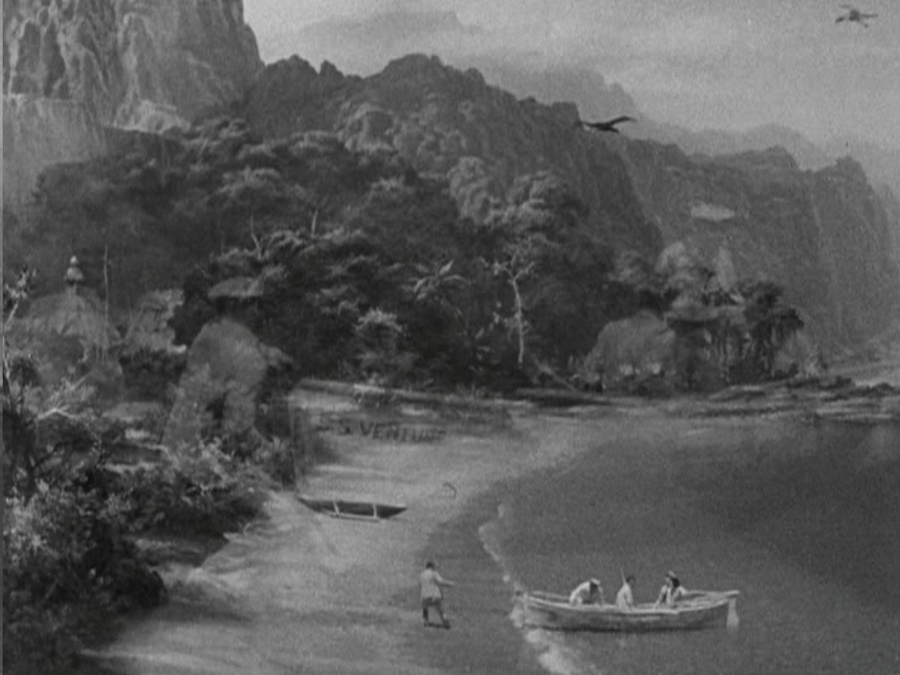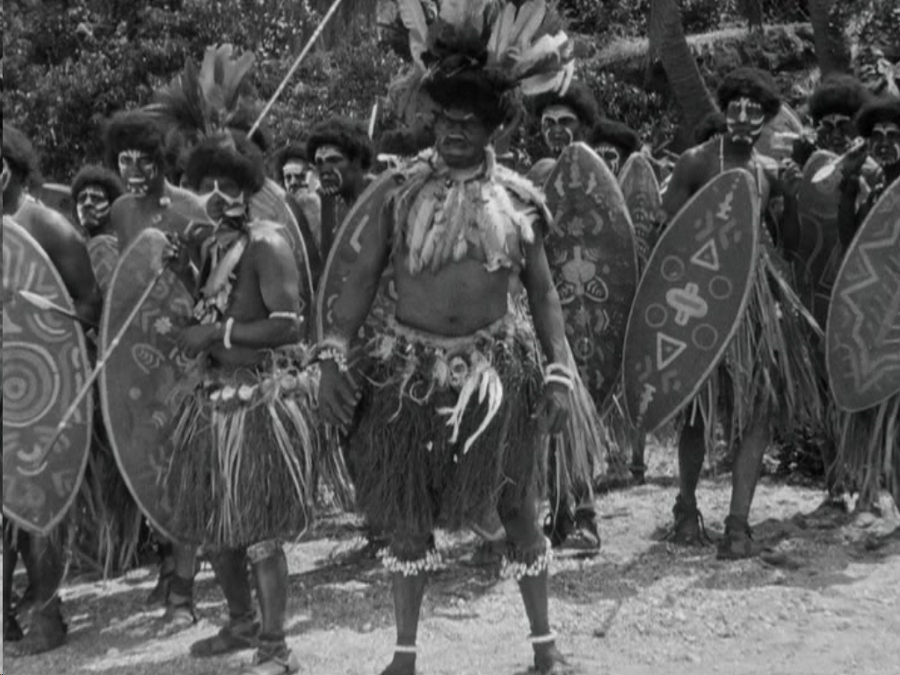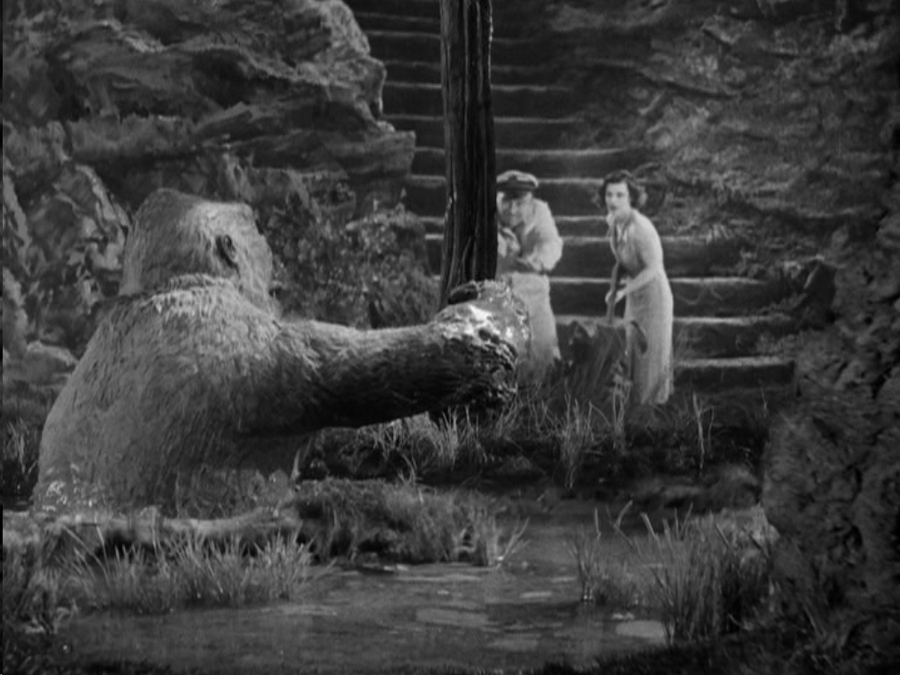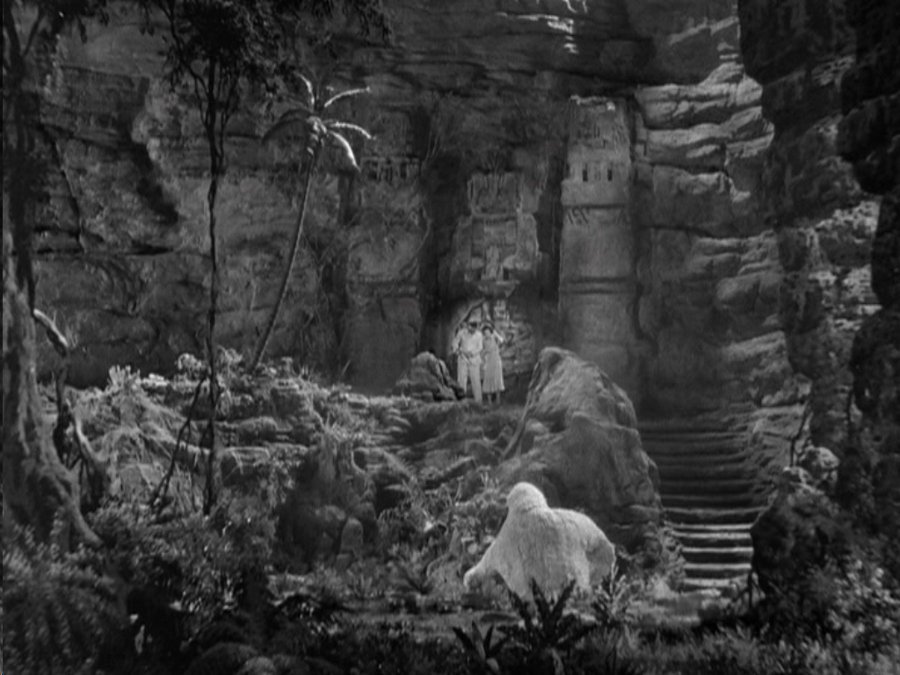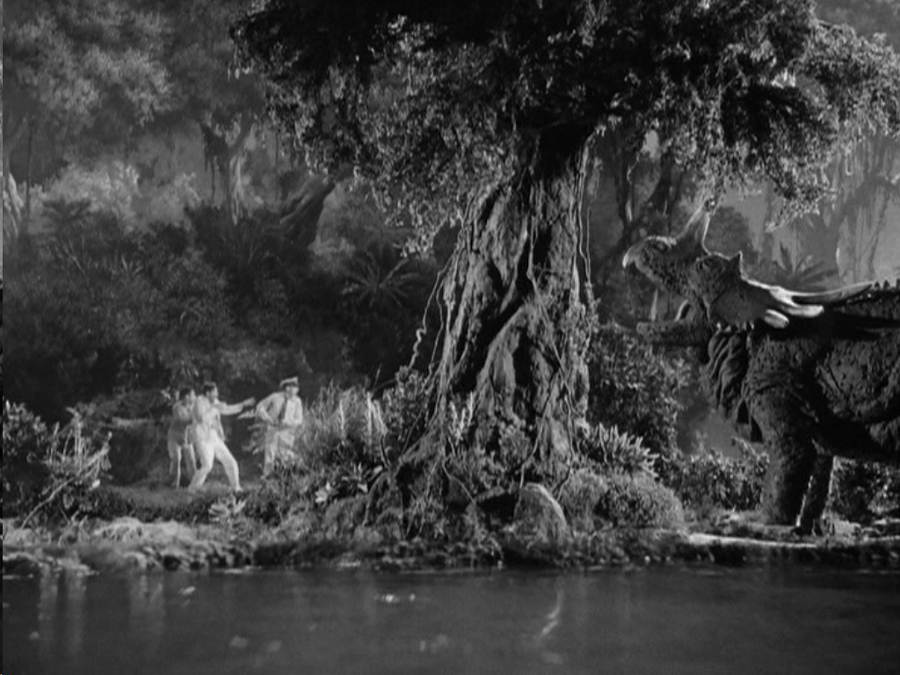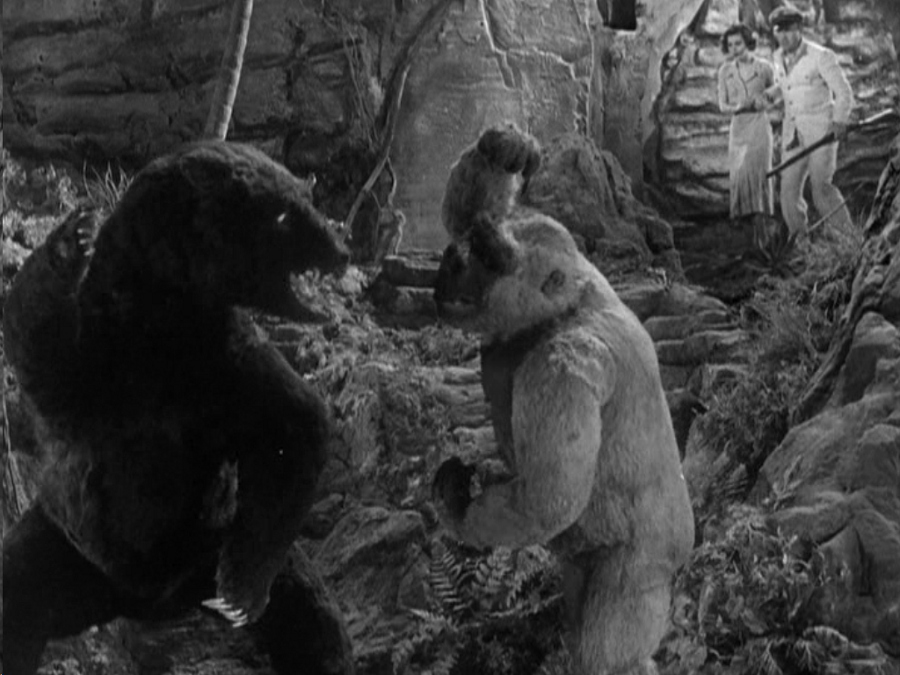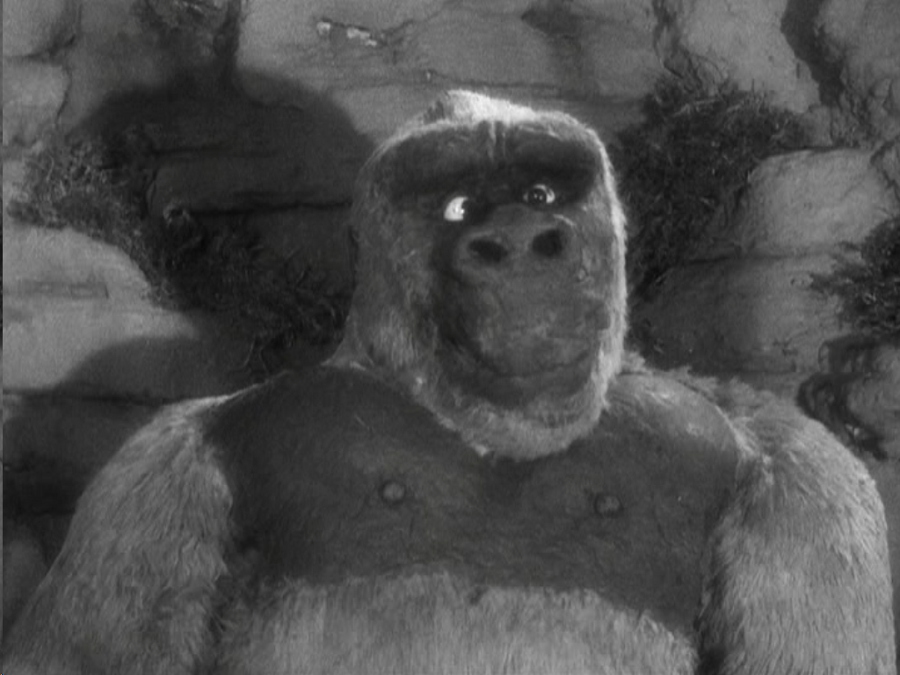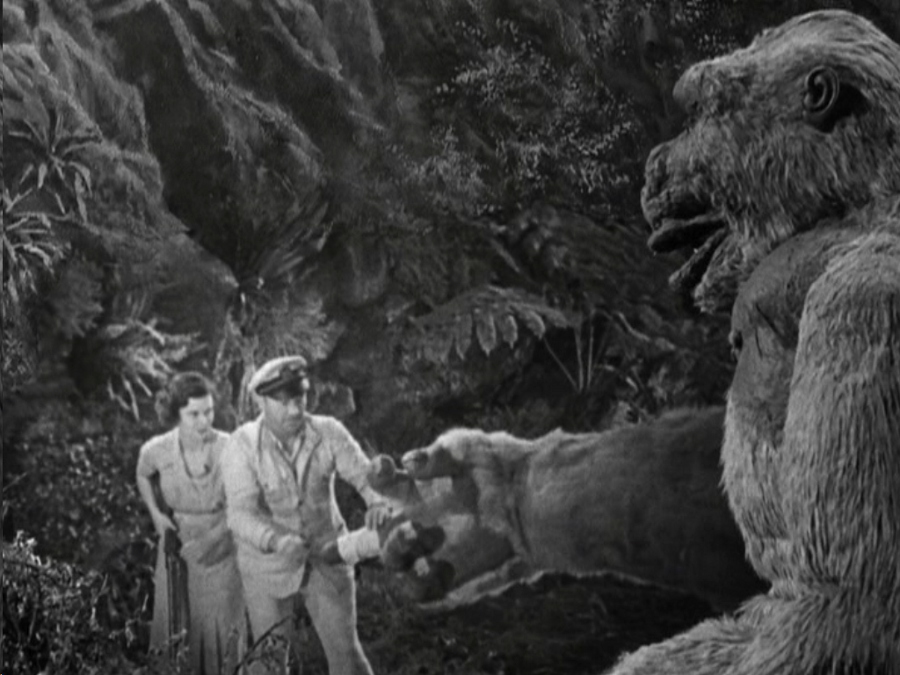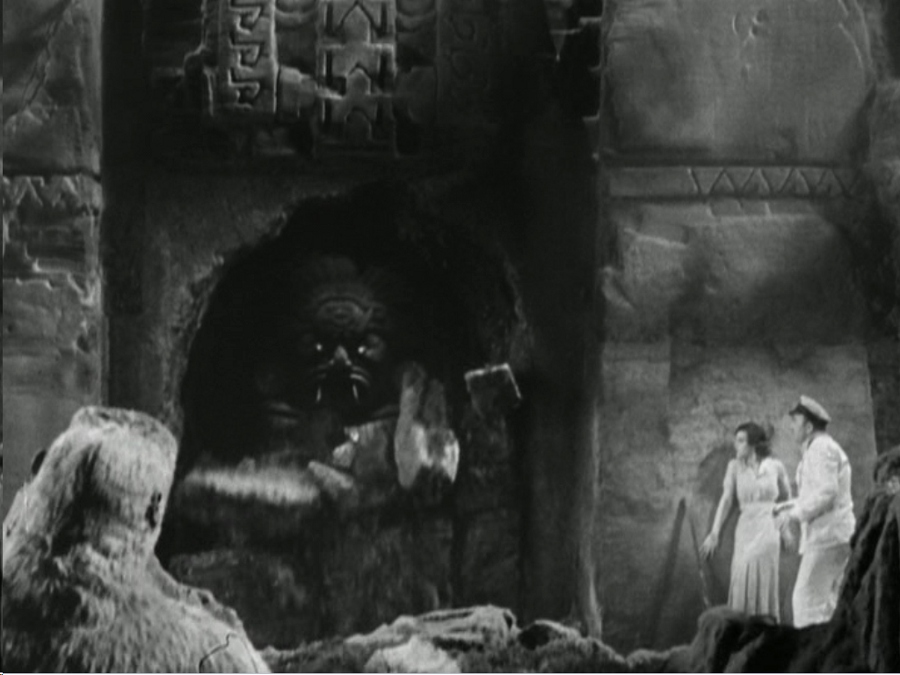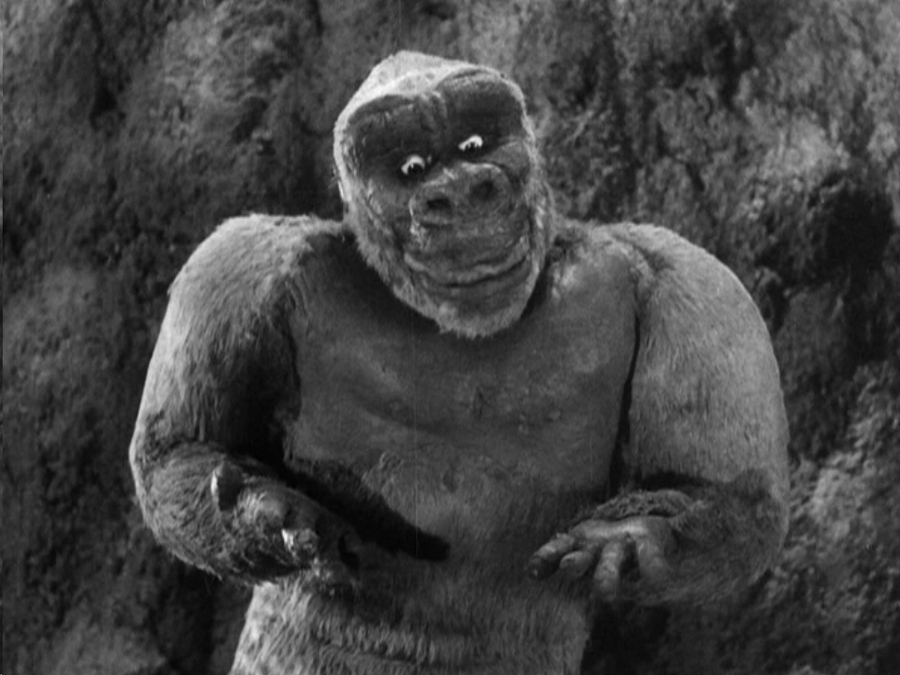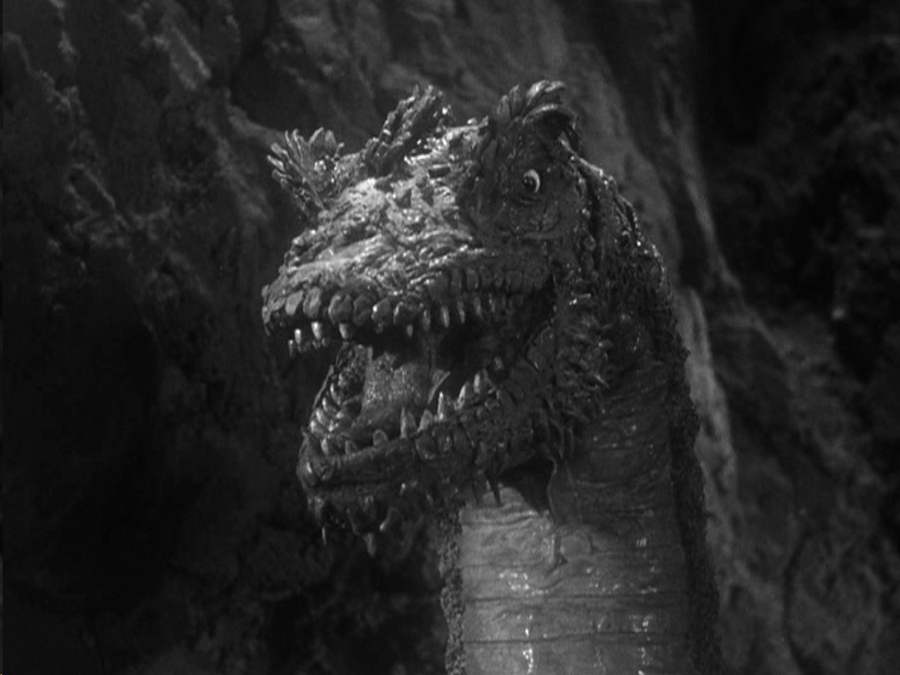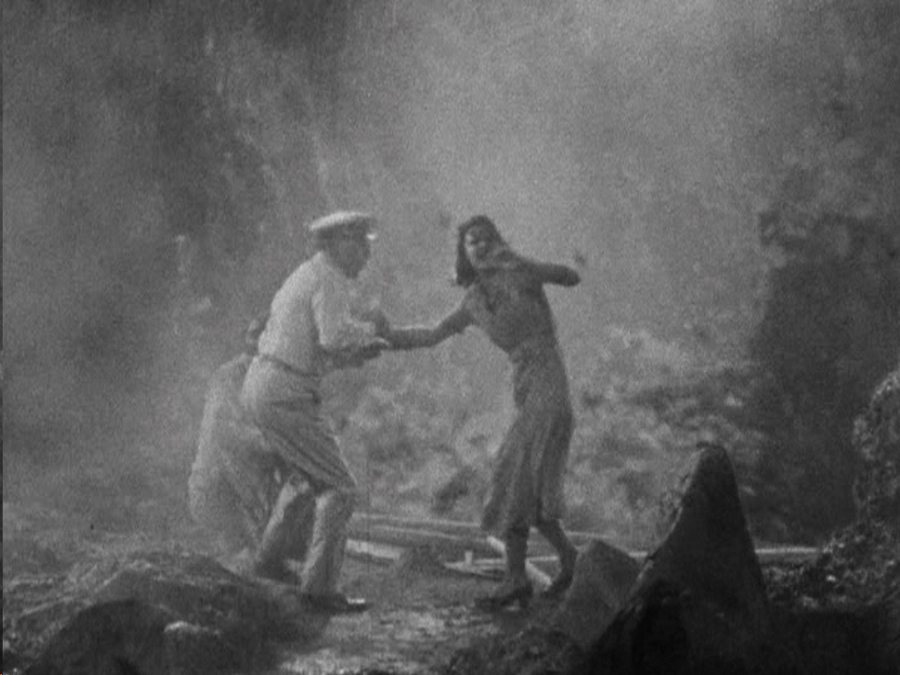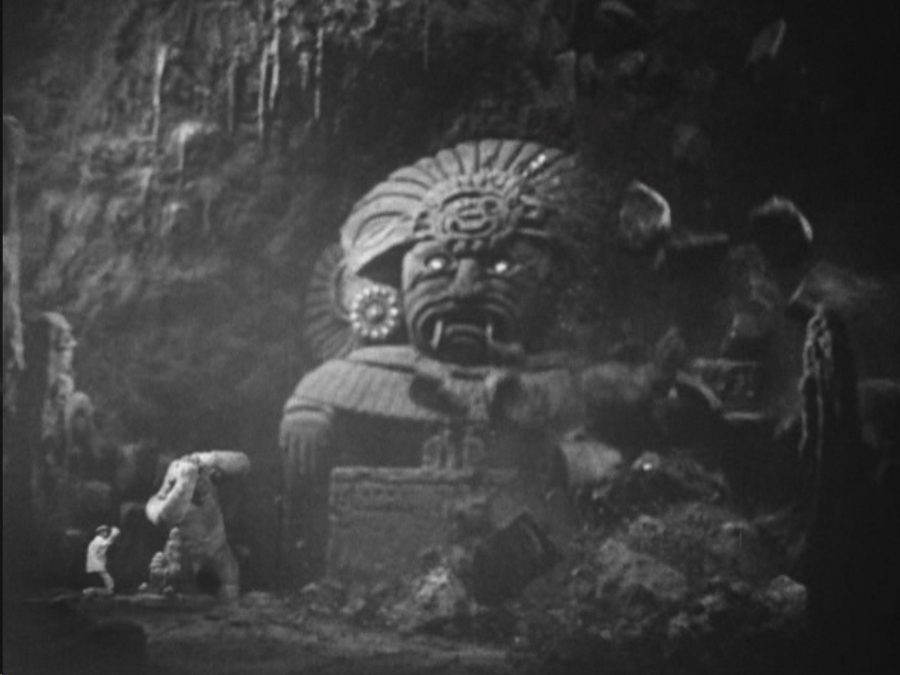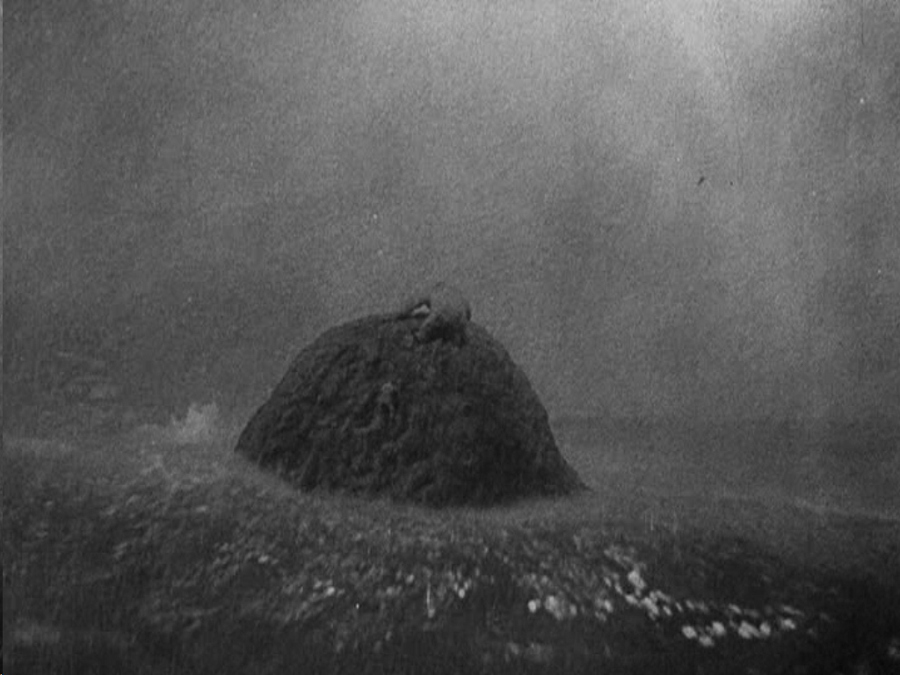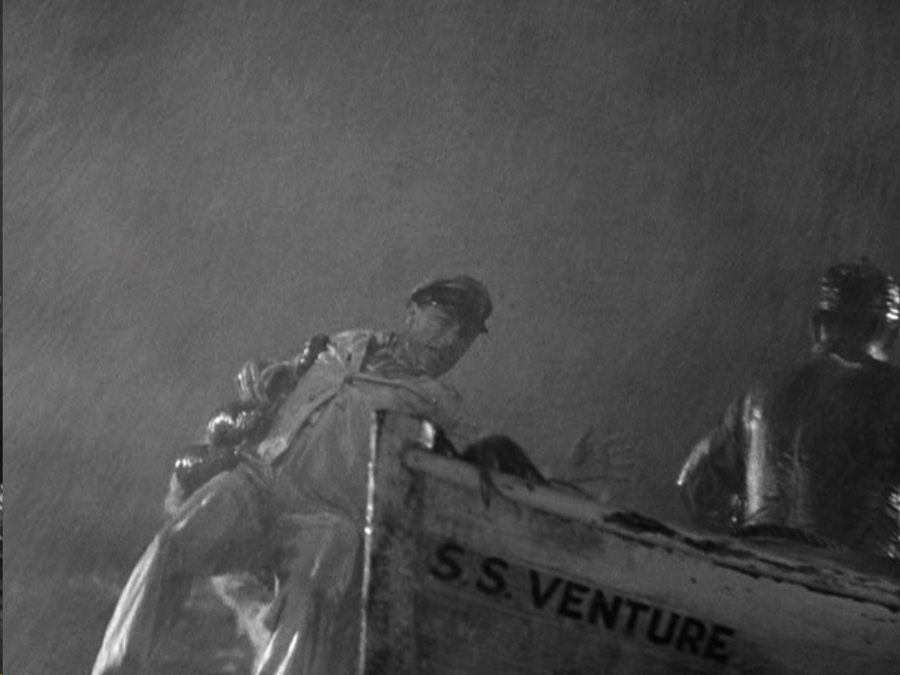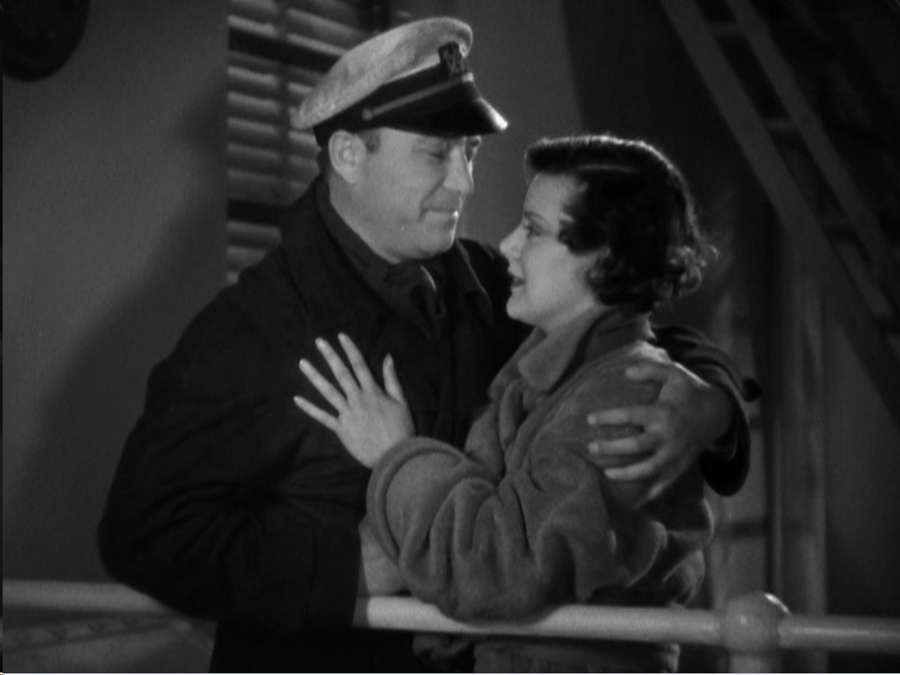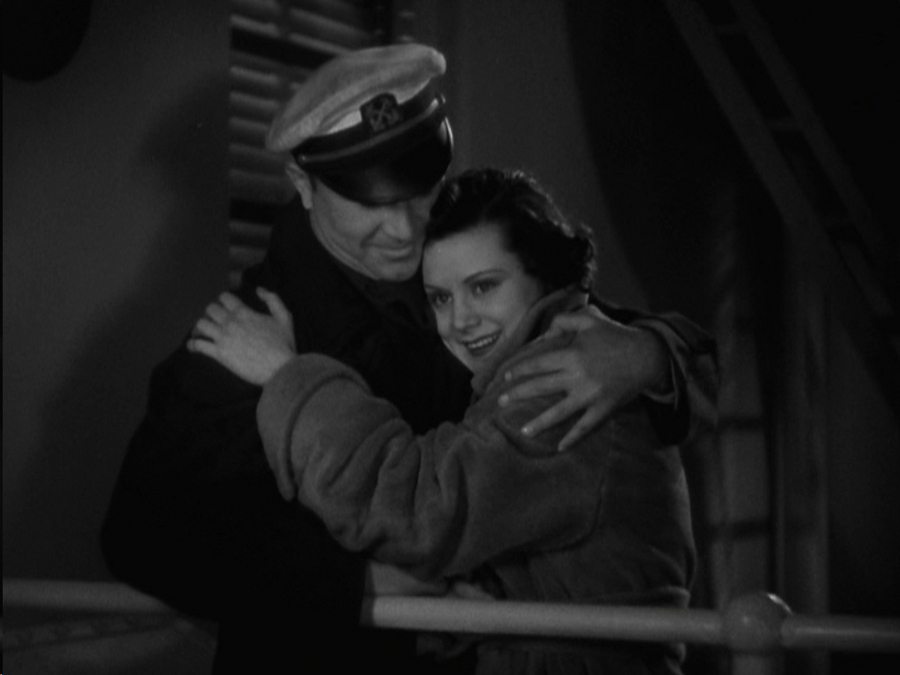All right, our month-long Halloween extravaganza kicks off with Super Movies now moved back to Monday! For this month’s film theme, I’m going to be showcasing Willis O’Brien’s lesser-known works, as well as others related his career. To kick things off, let’s start with The Son of Kong, the quickie sequel that RKO rushed out in the wake of the incredible success of King Kong.
And when I say “quickie” and “rushed,” I’m not kidding. King Kong was released on April 7, 1933. The Son of Kong was released on December 22, 1933. That’s eight and a half months to greenlight the sequel, reassemble the crew, write a new screenplay, shoot live action, build miniatures, shoot stop-motion special effects, edit and score, strike prints and build an advertising campaign. No wonder the movie falls short.
Of course, what do you expect from a movie produced by the National Rifle Association? Sorry, no, that’s the National Recovery Administration, a sign that RKO’s trying to stay on the Roosevelt administration’s good side. Then come the opening credits, and almost everyone from the first picture has carried over to the sequel: Merian Cooper as exec producer, Ernest Schoedsack getting sole credit as director, Ruth Rose as screenwriter, Willis O’Brien’s effects crew, Murray Spivack on sound, Max Steiner on music.
On the cast side, Â Robert Armstrong returns as Carl Denham, Frank Reicher as Captain Englehorn, Â and Victor Wong returns as Charlie, the cook (listed in the opening credits only as “Chinese Cook”). Notably absent are our two leading lovebirds, Bruce Cabot as Jack Driscoll and Fay Wray as Ann Darrow. Not only do they never show up, they are never even mentioned, as if they never existed.
The story begins about a month after the end of King Kong. Denham is hiding out in his room in a boarding house, because there is a never-ending flood of process servers trying to serve him with papers. Everybody who was killed, injured, or suffered property damage at Kong’s hands is suing Denham, who is flat broke. Charlie shows up at the rooming house to deliver a message from Captain Englehorn, who wants Denham to come meet him on the Venture.
Denham enlists the aid of Mickey, the cleverest of the process servers, to elude the rest. When Denham gets to the Venture, he and Captain Englehorn exchange tales of woe before Mickey shows up again to warn Denham the Grand Jury is going to indict him. Â Englehorn suggests they use what little money they have to scrape up a skeleton crew and head for the East Indies, where they can run freight for a while until the heat cools down.
And they’re off! Their problems aren’t solved, though. When they put in at the island port of Dakang, there is little work to be had and the unpaid crew is getting surly. Denham tries to get Englehorn’s mind off it by taking him to a cheesy show starring the Sagacious Seals and La Belle Helene. And these musical monkeys.
These are not to be confused with TV’s The Monkees, because these monkeys actually play their own instruments. Except that cello player. I smell shenanigans there.
After the monkeys are finished, we get to hear a song from La Belle Helene, introduced by a skeletally creepy master of ceremonies. A cute young brunette played by Helen Mack flounces out and starts singing “Runaway Blues” in a warbly alto while pretending to strum a guitar.
It’s not a very good song to modern ears. But it wasn’t meant to be a very good song in the 30’s either. It sounds like the blues records I’ve heard from the 20’s, so I’m guessing maybe the style had gone out of fashion. The movie hangs a lampshade on it by having Denham and Englehorn go back and forth about how awful she is. Denham cuts her some slack because she’s cute, but Englehorn’s having none of it.
And as a side note, I’m wondering if Max Steiner actually wrote the song. It sounds nothing like the bombast of the rest of his score, which repeats the themes from the first film. But there’s no composer credited for the song, which is then used as Helen’s theme on the soundtrack for the rest of the movie.
Anyway, after the show, the creepy MC (who is Helene’s father) is visited by a  drinking buddy of whom La Belle Helene (or Hilda, according to the opening credits–her name is never actually spoken after she is introduced on stage) doesn’t approve. The drinking buddy is an ex-sea captain named Helstrom. They’re both mean drunks. Helstrom denigrates the lousy show, which leads Hilda’s father to accuse Helstrom of having purposely run his own ship aground to scam the insurance company. Instead, he now has no ship, no certificate and no job. Which means a few seconds later, he’s down a drinking buddy, as well.
He brains Hilda’s dad with the whiskey bottle. A lantern is knocked over and sets the tent on fire, and Helstrom flees. Hilda awakes, sees the flames, and springs into action (luckily, she wore her shoes to bed). She frees the seals and monkeys, then rushes close to the flames to grab her father and drag him out in this actually-kind-of-awesome tracking shot where she has to keep kicking stuff out of her way.
Unfortunately, he dies in her arms moments later as the tent is completely engulfed in flames. The next morning, Hilda is trying to recapture her monkeys (one of them named after me, BTW) when Denham happens by and tries to cheer her up. He tells her never to admit to how bad her show was, leading her to conclude that a man so used to shoveling bullshit must be in show business. She’s disappointed when her tells her he’s not.
Later, she runs into Helstrom and accuses him of killing her father. She also says she’ll be telling the magistrate all about it when he arrives on the island. Helstrom freaks out and goes to a bar where he runs into Denham and Englehorn. Helstrom is the man who sold Denham the map of Kong’s island. He’s heard Denham made a big score there and suggests that Denham owes him. So Denham offers a 50-50 split of 11 lawsuits and a Grand Jury indictment. Next, Helstrom asks for passage aboard the Venture out of Dutch jurisdiction, which leads Englehorn to distrust him. Besides, they have no cargo lined up.
Then a desperate Helstrom asks Denham if he found the treasure of Skull Island. Denham’s never heard of the treasure (because Helstrom’s obviously making it up–John Marston is seriously awful in the role). Denham is desperate enough to take Helstrom at his word, and they decide to return to Kong’s island.
Denham visits Hilda before they leave to give her a little money and say goodbye. Hilda asks to come along with him. What about her plan to report Helstrom to the magistrate? It’s never brought up, but since she has no real evidence, there’s probably not much point. Anyway, Denham turns her down and leaves.
Once they’re at sea, Englehorn trusts Helstrom less and less. And with good reason, since Helstrom’s inciting the crew to mutiny with wild tales of the dangers of Skull Island, and the promise that if he were captain, he’d never endanger the men. And Charlie the cook discovers a stowaway in the forward hold. And guess who it is.
That’s right. Hilda, who seems to have developed a little crush on Denham. She and Helstrom are unhappy to find each other on ship, but he convinces her to stay quiet by telling her that Denham will be upset if she causes any drama on the ship after stowing away. Later, she and Denham stand side-by-side at the ship rail, looking at the moon. “This is nice, isn’t it?” she asks, to which he replies, “It’s all right” (an answer which always drove my ex-wife crazy, BTW).
We’re about halfway into the film now, and my feelings about it are profoundly mixed. On the one hand, it’s been pretty dull, taking entirely too long to get us to the good stuff, the reason we were here to see the movie in the first place.
But on the other hand, there are some interesting dynamics going on. Denham’s desperation, Helstrom’s desperation, Hilda’s loss, and her crush on Denham conflicting with her desire to punish Helstrom. Hilda is a much more interesting character than Ann Darrow, and both Denham and Englehorn are much more fleshed out than in the first film. I especially like Reicher’s performance as Englehorn; he’s cynical and experienced, smarter than Denham, but also upright and loyal.
And finally, we get to Skull Island, where the crew finally decides to mutiny. They put Denham, Englehorn and Hilda over the side, along with Charlie, who volunteers to leave because he doesn’t like the rest of the crew. As they’re rowing away, Helstrom starts giving orders, which gives the mutineers a laugh before they pitch him over the side, too. He ends up on the lifeboat with Denham’s group.
They put ashore on a beautifully matte painted beach, with Willis O’Brien’s standard animated seagulls flying overhead (I didn’t notice when I took the screencap that this was actually starting to dissolve into the next shot–don’t hold the phantom figures against the movie). Denham thinks the natives will be glad to see them, since they took Kong away and ended his reign of fear.
Uhh, not so much. Actually, they’re kind of pissed at him for letting Kong into their village to bust stuff up in the first place. Noble Johnson reprises his role as the native chief, and don’t ask about African natives on a South Pacific island, because that is one problem that belongs to the first film, not this cheapie sequel. Denham and friends have to row around to the other side of the island, where they find a tunnel through the cliff into a secret grotto.
And now is when the movie finally gets good for 10-year-olds, but also betrays its profound cheapness. Denham and Hilda follow a passage up from the grotto to see where they are. And literally feet from the end of the passage, they find a little Kong, trapped in quicksand.
Unlike the original Kong, this one is small, only twelve feet tall or so. And he’s white, which you could see as yet another sign of the movie’s racism, since this Kong turns out to be friendly. In an interview published here, Marcel Delgado said he was made white as an in-joke to refer to Kong having made the baby with Fay Wray.
Anyway, Hilda suggests they help him, and Denham, feeling guilty over the original Kong’s fate, agrees. He pushes down a dead tree for the little Kong to pull himself out with. Moments after the little Kong disappears into the forest, Captain Englehorn and the others show up.
And here we find the incredible economy of storytelling that is forced onto the movie by its lean budget. Â Here is where Hilda and Denham rescue little Kong, just outside the passage they took from the grotto.
I’ll tell you what’s significant about this location in just a bit. Englehorn suggests they go hunting to stretch their rations, so he, Helstrom, and Charlie head straight back out.
Where they run into a Styracosaurus, who traps them in a cave. The Styracosaurus was originally built for King Kong, and was supposed to chase Denham’s men onto the log bridge where Kong then shook them off. Meanwhile, Denham and Hilda are chased by a giant cave bear which looks to have been hastily built. It’s not a pretty model.
The animation is jerkier than before, too. According to Wikipedia, O’Brien left all of the animation to his assistants, thinking the sequel “cheesy.” Somewhere in the vast Frazier archives, I have an old issue of Cinefex with the definitive in-depth article on O’Brien and his career, but I don’t have time to search it out and confirm this. There is a photo of O’Brien “animating” a dinosaur taken during the production, but it may just be a posed studio publicity shot. There’s another story about that photo, but I don’t want to tell it in this article.
So instead, take a closer look at this shot and compare it to the location shot above. Notice that little Kong and the bear are fighting just a few feet from the quicksand. Denham and Hilda are standing in almost the exact same spot in both shots (because that was where the process screen on the miniature set was) and the tree just above the bear’s head is the tall palm on the left in the previous shot.
During the fight, little Kong is thrown back and hits his head against a rock, leading to one of the movie’s several slapstick moments.
According to screenwriter Ruth Rose, she figured they could never out-tragedy King Kong, so they decided to play it for laughs instead. Finally, little Kong manages to fight the bear off. Little Kong has won, but his finger is injured.
Hilda suggests they help him with the injury and tears off the bottom of her slip to use as a bandage. Denham bandages little Kong’s finger while he apologizes for what happened to the elder Kong. The scene serves a valuable dramatic purpose while mainly being notable for the fact that little Kong is flipping off the audience for three or four minutes of screen time.
Hilda says she’s hungry and wishes for a coconut from the palm (the one pictures above the bear’s head). So little Kong shakes the tree and nearly kills them with falling coconuts. Denham yells at him to be more careful and drives him away.
Later in the night, as Denham convinces Hilda to sleep by the campfire while he keeps watch, they share a special bonding moment while little Kong watches from a distance. It’s an odd romance, because their ages are so far apart, so that Denham most of the time is acting more like a father or uncle toward her. But it does seem as if we’re supposed to read it as romance and not just friendship.
The next morning, Denham decides to try to break into the apparent temple carved into the side of the cliff (in the shots above, Denham and Hilda are standing right in front of the blocked doorway). Denham isn’t making much headway until little Kong lends a hand.
Yes, you’re getting it now. The story is constructed such that almost everything that needs to happen on Skull Island happens within the environs of that small location shot above, and the cave leading from it. That’s economy.
What’s more, everything was shot in a studio, but they built almost nothing full-size. The island backgrounds, the temple cave, the grotto: they’re all miniatures either matted or rear projected behind the actors. Decades before George Lucas tried making movies without sets, The Son of Kong beat him to it.
So Denham and Hilda enter the cave, followed by little Kong, who helps them pull down a necklace with a fist-sized cluster of diamonds on it. There are more jewels higher up on the idol, but before they can think about getting them, another monster attacks.
This one is not any species I actually recognize. It looks something like a dragon, to be honest, though it doesn’t breathe fire. I’m thinking they just took the armature from one of the Kong dinosaurs and sculpted a different exterior to make it seem unique and unusual. There’s a brief fight, with the obligatory “playing with the dead dinosaur” bit that the elder Kong always did and more supposedly comical gestures. Like this shrug as Denham and Hilda head outside after hearing Englehorn’s voice.
Denham tells Englehorn, Helstrom and Charlie that he has found the treasure of the island, at which point Helstrom calls him an idiot. There never was any treasure. He just made it up so they would take him out of Dutch jurisdiction. Then little Kong appears and Helstrom, long established as a coward, shrieks and runs away. Englehorn realizes that he may take their lifeboat, so they all chase after him, except Denham, who says he’s going back for the rest of the treasure.
Helstrom reaches the boat, at which point a sea monster rears up from the water and eats him. Once again, I’m thinking this may have been the brontosaurus from King Kong with a new skin (not the animation puppet, but the puppet they used in the water for the attack on the raft).
Okay, now you’re going to have to give me a moment. I have spent my entire life watching movies. A lot of movies. Some have been very good, some bad, some OMG so bad. But this next moment in The Son of Kong may be in fact the most arbitrarily out-of-nowhere curveball of a twist in any movie I have ever seen. As Englehorn, Hilda, and Charlie run down the huge stone steps leading to the grotto, the ground starts to rumble. And then Helen Mack (whose performance as Hilda I have quite enjoyed so far) shrieks in this odd New Englandish accent, “Ehhthquake!”
And it is, indeed. Keep in mind, we’ve had no warning of an earthquake. No pre-shocks, no smoking volcanoes, no natives warning of dire consequences if the gods are offended. But suddenly, the earth is rumbling and the rock walls are collapsing all around our heroes.
But it isn’t just an  earthquake. It’s like the world has exploded. Up on the surface, a typhoon has ripped out of nowhere to full hurricane strength as the earth is literally collapsing under the natives’ feet.
Denham and little Kong are trapped in the giant temple cave in a pretty impressive process shot.
So Denham and little Kong climb the walls of the cave to try to reach safety, while Hilda, Englehorn and Charlie row out of the grotto as the island literally falls apart around them. Denham and little Kong find a passage outside, and within moments, the entire island has fallen away into the ocean except for a little bit that the two are trapped on.
Little Kong’s foot becomes trapped in a crevice that opens up under him as this last bit of land sinks. As the others try to row the boat over in the typhoon, little Kong picks Denham up and holds him overhead before he, too, disappears under the water.
The boat gets there just in time to save Denham before the hand sinks as well. Our last glimpse of little Kong is his bandaged middle finger sinking out of sight.
To get an idea of how abrupt and fast all this is (and to please the math geek in me), the destruction of the island, from first rumble to the last glimpse of little Kong’s hand, takes three minutes and 40 seconds. The movie spends almost as much time–three minutes and twenty-five seconds–on the musical monkeys and Hilda’s awful song.
Days later, everyone in the boat is starving and weak from thirst. Denham still has the fist-sized diamond in his pocket, for all the good it does him. But then they spot a passing ship and all is well.
Later on the ship, Hilda and Denham meet by the railing to look out at the ocean. Denham tells her she’s a rich woman now; he’ll split the treasure with them four ways. She suggests they split the treasure three ways, which yes, is a romantic way to say “let’s get married,” but also suggests that Hilda is lousy at math. After all, if they split the treasure four ways and then get married, they end up with half rather than a third. But still…
Denham hugs her, and they reprise the “Isn’t this nice?”–“It’s all right” bit, at which point she looks lovingly into his face. Her eyes flick to his lips, and then she tilts her head just a little, and it’s finally kiss time for Denham…
but no, at the last second, she turns her head, and it’s mouth-full-of-hair time for Denham. Poor guy.
So overall, no, this is not a good movie. But like so many of the movies I’ve featured in the past, it’s bad in fascinating ways. Helen Mack has been virtually forgotten today, while Fay Wray has become famous for her role as Ann Darrow. Yet Mack’s character is miles more dramatically interesting than Wray’s; it’s just that the writing is so all-over-the-place that none of the interesting threads get developed or resolved in a satisfying fashion. Likewise, the characters of Denham and Englehorn are much more interesting this time around, but the story gives them nothing much to do once they get to the island. Then it’s just monster-fight, monster-fight, ehhthquake, done.


